MLB 2023; The Big Leagues About to Change
The competition committee of Major League Baseball decided to make rule modifications in September; they will take effect this month, when spring training games start.
Throughout the preceding seasons, the lower leagues had all of these laws in effect, which caused significant changes to the play’s tempo and on-field activity.
The abolition of the shift, the first-ever pitch clock, larger bases, and a cap on the number of times a pitcher can leave the rubber are among the new regulations. This article particularizes some of the information regarding the new regulations, what they will entail for the players, and how the game will probably evolve.
- Pickoffs
- The Shift
- Bigger Bases
- Pitch Clock
- Position Players Pitching
Pickoffs
Pickoff attempts, pickoff fakes, stepping off the rubber for any reason, and time requests from the defense are all examples of “disengagements,” which also include each time the pitcher makes a pickoff attempt, pickoff fake, or just steps off the rubber.
So, in new rule the pitchers can disengage twice every at-bat without suffering any consequences. When a runner or runners go up a base in the same plate appearance, the disengagements rule is reset.
The rule will be applied as if no offensive player advances a base or an out is recorded on the following play after the third step-off, the player or pitcher will be charged with a baulk.
Now they are attempting to alter the number of stolen bases per team falling from 0.66 a decade ago to 0.51 in 2022, MLB has expressed concern over the lack of activity on the base paths in recent attempts to enhance the aesthetics of the game. (Stolen base rates were in the 0.75 to 0.80 range in the 1980s and 1990s.)
In the minor this means that stealing attempts increased dramatically when the Single-A and High-A pickoff rules were implemented in 2021. Baseball experienced significant improvements throughout the minors in 2022 as the rules were extended to every level.
The Shift
All four infielders—two on each side of second base—must be on the infield grass (or dirt) at the moment a pitch is thrown. The moment the ball leaves the pitcher’s hand, players are free to move.
The game continues without consequences if the batting team makes it to base and runners move up on a ball hit in violation.
The hitting team can choose to concede the penalty, which would give additional one ball to the hitter’s count, or decline it, in which case the play would stand if it had any additional consequences, such as an out, a sacrifice, etc.
Infielders used to be prohibited from switching sides for the duration of the game if they began the game on one side of the field, however that rule was later changed to only allow switches during each inning, barring substitutions in the middle of innings.
Or in more easy way we can say that a player who starts at first or second base must stay there the entire inning but can switch to short or third base the following inning. And also the infield can be rearranged if there is any injury during the middle of an inning.
They are in fact trying to change the batting average as in 2022, the league-wide batting average dropped to.243, the lowest level since 1968.
The reduction is primarily due to a paucity of singles; the 2022 season had the third-lowest rate of singles per club in MLB history (with the 2021 and 2020 seasons taking the first and second slots, respectively), with a rate of 5.33 per team.
Now what the minors are meant to be here. In the lowest levels of the minors where shifts are regulated during the first two months of the 2022 minor league season, left-handed hitters’ batting average on balls in play enhanced by eight points. It was only up three points in Triple-A, where shifts are permitted.
Well, a hitter who opposes doing away with the shift would be difficult to find, especially one who bats left-handed. Unexpectedly, some pitchers support the decision as well.
As David Robertson, a Phillies reliever, remarked that if a shortstop is unable to play shortstop, what is the point of having one?
Bigger Bases
According to the new rule bases will grow from 15 inches to 18 inches in size. While base theft attempts should increase due to the bases’ increased size, injuries near them should decrease.
The introduction of larger bases at Triple-A didn’t upshot in much of a modification on its own, but in the lower levels, the combination of larger bases and pickoff rules led to substantial increases in the number of steals per nine innings.
Pitch Clock
The new rule is that when the bases are empty, pitchers have 15 seconds to deliver a pitch; when there is a runner on base, they have 20 seconds. With eight seconds to go on the pitch clock, batters must be in the batter’s box.
Now the matter is how it will be enforced. So, a pitcher will be charged with a ball if “the motion to deliver a pitch” has not begun before the timer expires. A hitter will be assessed a strike if he waits too long to enter the batter’s box.
In point of fact they tried to change the average length of a nine-inning major league game was 3 hours, 4 minutes in 2022, which is actually a six-minute decrease from the record-breaking year of 2021. Nevertheless, the length of games has been steadily increasing ever since them first over the three-hour threshold in 2014.
While there is no obvious correlation, 110 pitchers averaged as a minimum 20 seconds per pitch with the bases vacant in 2022, according to Statcast’s pitch tempo tracker.
Two clocks will be required in the outfield on any side of the batter’s eye, and two more will be needed behind home plate on either side of the umpire in each stadium.
Although spring stadiums might only have one clock, they will otherwise be built to the same specifications as MLB ones.
The equipment that each umpire will have on them will alert them when the pitch clock has run out. Also new is the option for umpires to communicate with one another without needing to meet in the center of the infield by using communication devices.
As far as the minors are concerned then the results were seen right away when stronger pitch clock became applicable, based on a 14-second clock with the bases vacant and an 18-second clock with runners on, started earlier in 2022 in the minors.
The duration of the first 132 minor league games played under the new regulations was an average of 2 hours, 39 minutes.
That is 24 minutes less than the average of the 2021 season and 20 minutes less than the average of a control set of 335 games played without the clock at the start of the season (3 hours, 3 minutes average).
The players have mixed reactions regarding the pitch clock, with seasoned relievers concerned about speeding through crucial circumstances. But, a lot of young players who have played in the minors over the last couple of seasons are accustomed to it.
This is likely to spark the biggest discussion among players, in addition to the new pickoff rules that are connected to the pitch clock.
Position Players Pitching:
The situations in which teams can pitch a position player will be more restricted.
The parties are currently contemplating a change that would require the leading team to be ahead by at least 10 runs and the trailing team to be down by at least eight runs before either team may pitch a position player.
The previous regulation permitted them to utilize one whether up or down by six runs or more.
Too many position players are taking the mound during the season, according to the league and now even the players. In reality, players think it’s having an increasing impact on output, including offensive and defensive measures, which are all taken into account during arbitration and free agency.
There were 32 games in 2017 where position players pitched. The Elias Sports Bureau reports that this figure increased to 132 during the previous season.
The above mentioned are some important rules that have highlighted in the article. Though there have many other queries can be in one’s mind too so the following is an attempt to cover some of those queries.
- Catchers pickoff throws are not limited. Catchers have unlimited opportunities to throw to any base. Once the pitcher gets the ball back from an infielder, the pitch clock will start over again.
- A catcher cannot keep the ball for an extended period of time to give a pitcher extra time.
- There is now a reduced distance from home to first and third base as the base has grown in size by 3 inches square compared to before.
- A batter can step out to reset the pitch clock only once each plate appearance, when he declares a timeout. After any pitch, the batter is free to leave the batter’s box as long as he is prepared and aware of the pitcher with eight seconds left on the clock. He needs to utilize his timeout to restart the clock.
- A fielder running starts won’t be allowed. The fielder can shift to the other side of second base only after the pitcher releases the ball. Violations will result in a ball being called. If the ball is put in play, however, the offensive team can choose to accept the result of the play.
- If the catcher secures the final out of the inning, he will have more time to don his gear and proceed to his position.
- The umpire may begin the clock even if the outfielder is not in a certain position. The clock will begin if he is close to it and the pitcher has the ball.
- A pitcher may request a fresh ball but he has to execute it with at least eight seconds still left in the countdown. A warning might be sent if you ask the same question four or five times in a row.
- At least nine seconds must pass before a catcher is in the box and prepared to catch.

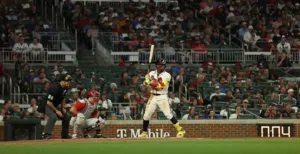
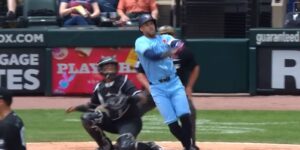
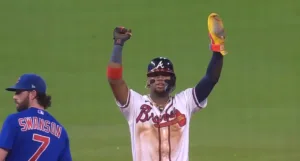


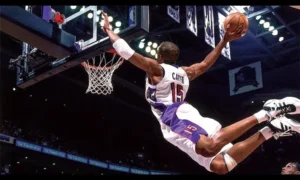
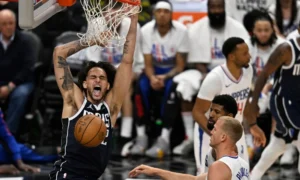
1 thought on “MLB 2023; The Big Leagues About to Change”
Comments are closed.